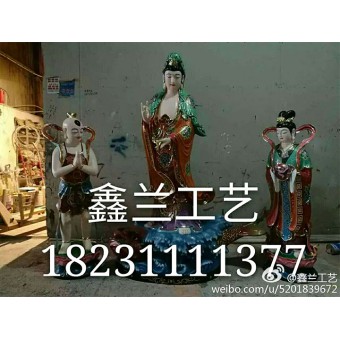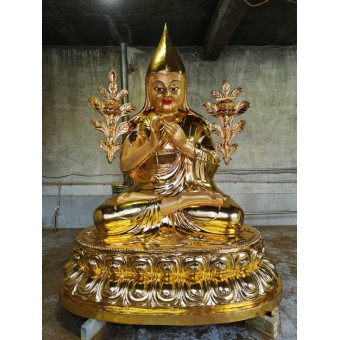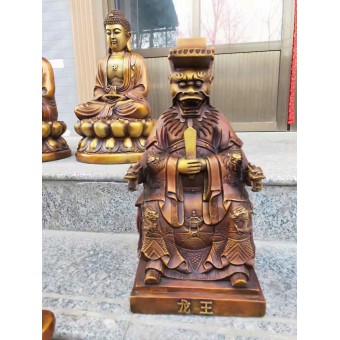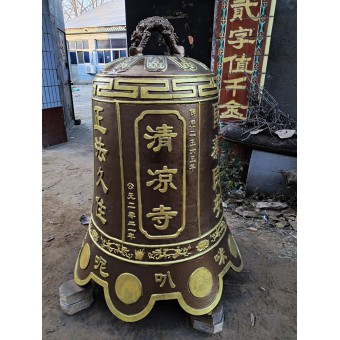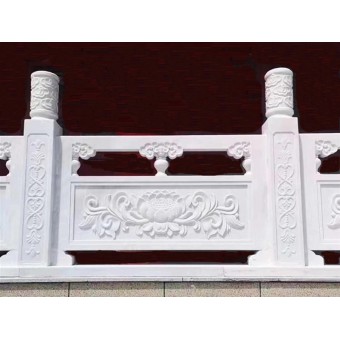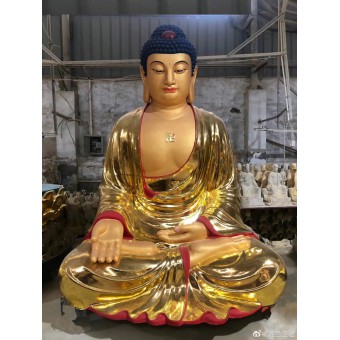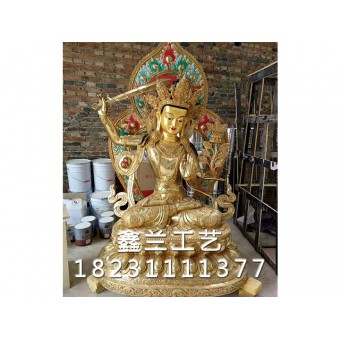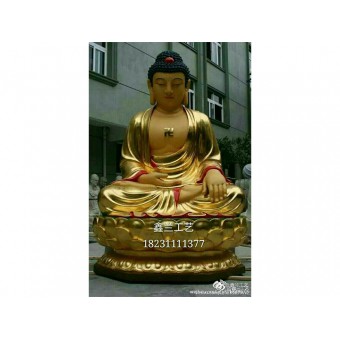
佛像艺术传入中国,兵分五路
The art of Buddha is introduced into China and the soldiers are divided into five ways
佛教于公元前6世纪产生于古印度,佛教文化与佛像艺术伴随佛教的向外传播,开始与世界各地文化艺术融合、发展。印度佛教进入中国有多条路线;印度的佛像艺术传入中国,也呈现出路线多、范围广的特点。
Buddhism originated in ancient India in the sixth Century B.C., and Buddhism culture and Buddhism art spread with Buddhism, and began to merge and develop with cultures and Arts all over the world. There are many routes in India Buddhism entering China, and the art of Buddha in India is introduced into China, and it also shows the characteristics of many lines and Fan Weiguang.
归纳而言,主要有五条路线:
In summary, there are five main routes:
南传陆路 从南亚诸地进入我国西双版纳地区传播,巴利文语系佛像艺术的主要传播路线。佛像造型以印度马吐腊风格和笈多风格为主。
The road from south to southern spread into Chinas Xishuangbanna region, the main route of transmission. The Pali Buddhist art. Statues in India Ma style and Gupta style wax spit.
Chen Qiaosheng Hill Guanyin Buddha gold ornaments
北传陆路 属于大乘佛教的犍陀罗佛像艺术从西北印度进入今阿富汗境内,进入中国的新疆、甘肃等地。现存于新疆的印度式佛寺石窟遗址,佛像都带有明显的犍陀罗特征。敦煌、麦积山等地的石窟造像带有浓厚印度风格,是佛像北传路线的有力证明。
North transfer land belongs to Mahayana Buddhist Gandhara Buddhist art from northwest India into Afghanistan today, in Xinjiang, Gansu and other places Chinese. Now in Xinjiang, India style Buddhist temple Grottoes statues are ruins, with obvious characteristics of gandhara. Dunhuang, Maijishan grotto statues and other places with strong India style, is a powerful proof of Buddha North transfer line.
北传藏道 从东印度北方经尼泊尔和喜马拉雅山进入西藏的陆路通道。公元13世纪,伊斯兰教进入印度,大批僧侣从此路线逃入西藏。带入印度波罗王时期的密教佛像,与西藏本地苯教(亦称本波教)佛像相结合,形成了具有明显特色的藏传佛像。藏传佛像是明清两代佛像艺术的重要组成部分。
The North passageway from the north of East India through Nepal and Himalaya Range into the Tibet road. In the thirteenth Century, Islam entered India, and a large number of monks fled from this route to Tibet. Into the India Baltic period of King Tantric Buddha, and Tibet local BON (also known as the Buddha taught combined wave) formed the characteristic of Tibetan buddhist. The Tibetan Buddhist statue is an important part of the two generation of the Buddhas art in the Ming and Qing Dynasties.
除以上三条主要传入通道之外,还有从海道进入中国的南海航道、蜀印陆路。其中,印度小乘佛教经海道进入缅甸、泰国等南亚国家,进入中国东南沿海的是大乘佛教。
In addition to these three main afferent pathway, and from the South China Sea Chinese seaway into waterways, Shu India road. Among them, India Theravada Buddhism through the Seaway into Burma, Thailand and other South Asian countries to enter the Chinese along the southeast coast of the Mahayana buddhism.
Chen Qiaosheng was hiding gold held by Guanyin Buddha ornaments handmade antique copper seat
早期佛像“印度味儿”浓
Early Buddha statue "India taste"
佛像并不是伴随佛教的创立而产生的。在佛教创立早期,佛教徒认为佛陀是神圣、至高无上的象征,只可在心中冥想,不可塑出具体的形象。早期的佛教艺术多以佛的脚印、莲花座、菩提等佛教信物代替佛的具体形象。
The statue of Buddhism is not accompanied by the creation of Buddhism. In the early days of the founding of Buddhism, Buddhists believed that the Buddha was a symbol of divine and supreme, only to meditate in the heart and not to make a concrete image. The early Buddhist art took the place of Buddhas footprints, lotus, Bodhi and other Buddhist beliefs to replac the Buddhas specific image.
早期佛造像受古希腊雕塑艺术风格的影响,注重将人体艺术的表现方法运用到佛造像上。例如,许多高古佛像的面相与印度人面相特点极为相似,佛像身材比例匀称,各部位肌肉特点与真人无异。
The early Buddha statue, influenced by the artistic style of ancient Greek sculpture, paid attention to the application of the expression of human art to the statue of Buddha. For example, the facial features of many high ancient Buddhas are very similar to those of the Indians, and the proportions of the figure of the Buddha are well proportioned, and the muscles of each part are the same as those of the human.
金铜佛像在佛教传入中国的早期称为金人或金泥铜像。随着犍陀罗、马吐腊、笈多艺术以及尼泊尔、克什米尔等造像模式和风格传入中国,对中国早期佛像造像有很深的影响,面相、衣纹、装饰都带有浓厚的印度特色。
The golden bronze statue of Buddha was called the golden man or the bronze statue in the early days of Buddhism. With the Gandhara, Ma La, Gupta art and spit in Nepal, Kashmir statues pattern and style was introduced into Chinese, has a deep influence on the early Chinese Buddha statue, face, clothing lines, decorated with a strong characteristic of India.
Chen Qiao Sheng handmade antique copper Xuande color Amitabha stepped lotus like Buddha ornaments
三国两晋十六国时期
Sixteen in the period of Three Kingdoms
佛教自东汉传入中国之后,佛像造像兴起于东汉中晚期。东汉、三国一直到西晋时期,佛像还只是简单依附于中国原有的神 形象,多数见于墓葬之中。
After the introduction of Buddhism into China from the Eastern Han Dynasty, the statue of Buddha sprang up in the middle and late Eastern Han Dynasty. The Eastern Han Dynasty and the Three Kingdoms to the Western Jin Dynasty, Buddha also simply attached to the original image of God China, most found in the tombs.
十六国时期,金铜佛像铸造出现。这个时期的佛像特点为头部有高肉髻,面相五官深刻,眼大鼻高,衣服多为通肩式。带有异域特征的同时,也呈现了部分的汉化趋势。
In the period of the sixteen countries, the bronze statue of the Buddha appeared. The characteristics of this period as the Buddha head high meat bun, face facial deep, big eyes high nose, the clothes to shoulder. At the same time, it also presents a part of the trend of Sinization.
Chen Qiao Sheng handmade antique copper Xuande color mahasthamaprapta tread lotus like Buddha ornaments
南北朝时期
The period of the northern and Southern Dynasties
南北朝时期的佛像造像一方面吸收了印度犍陀罗与马吐腊的风格特点,一方面与汉文化的艺术风格和铸造技法相融合。发髻呈波浪纹,衣饰为右袒肩式。北朝的佛像造像庞大,风格古朴粗犷,面相身躯肥胖,神情庄重安详。南朝的佛像则带有面相清秀的特点。南北朝后期,佛像服饰开始出现了褒衣博带的汉式衣裙。
On the one hand, the absorption characteristics of India style of Gandhara and Ma La spit of the northern and Southern Dynasties period of the Buddha statue, the integration of artistic style and a casting technique and Chinese culture. The hair was wavy, clothing to show partiality for shoulder. The Buddha statue of the Northern Dynasty is huge, the style is simple and rough, the face body is fat, and the spirit is solemn and serene. The Buddhist statues in the Southern Dynasties are characterized by a clear face. The late Northern Dynasties, Buddhist clothing began to appear in the Chinese style dress Dress of an ancient scholar.
隋唐时期
The Sui and Tang Dynasties
隋代是佛教历史的过渡时期,金铜佛像的风格既受北周、北齐的影响,又逐渐呈现出成熟特点,追求装饰变化,向唐代过渡,汉传佛像开始大量出现。隋代以立像的菩萨像较多。
The Sui Dynasty is a transitional period in the history of Buddhism, Buddhist statues style is affected by the Northern Zhou Dynasty, the Northern Qi Dynasty, and gradually mature, the pursuit of decorative changes to the Tang Dynasty, the transition, the statue began to appear in large numbers. In the Sui Dynasty statue Bodhisattva more.
唐代佛教发展达到鼎盛时期,佛像艺术也随之达到鼎盛繁荣阶段。此时期的金铜佛像总体呈现雍容华丽的特点。面相饱满圆润,肌肉结实,装饰繁复,衣饰宽大,体现了唐代的审美特点。
The development of Buddhism in the Tang Dynasty reached its heyday, and the art of Buddha also reached the stage of prosperity and prosperity. During this period, the gold copper Buddha shows the characteristics of elegant. The facial features are full and round, the muscles are strong, the ornaments are complex and the ornaments are broad, which embodies the aesthetic characteristics of the Tang Dynasty.
Chen Qiao Sheng handmade antique copper Xuande color founder Damour like Buddha ornaments
五代两宋时期
The period of the Five Dynasties and the two Song Dynasties
五代后周时期的“灭佛运动”致使大量佛寺佛像被毁,北方佛像艺术由此衰落下来,处于一个停滞的发展状态。到两宋时期,佛像艺术开始复苏并有了新的发展。宋代社会发展呈现出世俗化的特点,此时期的佛像以写实为主,风格与审美特点与当时社会相符合。此时期佛像以菩萨、罗汉为大众所喜爱,面相或圆或方。菩萨头戴花冠或发髻冠。佛像衣纹服饰上出现一种“V”字领的僧衣,是宋代僧人常见的服装样式。
The five generation after the period of "the Buddhist Movement" resulted in a large number of Buddhist statues were destroyed, the Buddhist art from fading down, in a stagnant state of development. In the period of the two Song Dynasty, the art of the Buddha began to recover and have a new development. The characteristics of the Song Dynasty social development presents secularization, this period of the Buddha to realistic, style and aesthetic characteristics and social accord. The statue of Buddha in this period is loved by the public as Bodhisattva and Rohan, face or round or square. The Buddha wearing a crown or bun crown. A "V" V-neck frock Buddha drapery dress, is the Song Dynasty monk common clothing style.
元代
Yuan dynasty
元代宫廷设置了制造佛像的专门机构——梵相提举司。元朝是少数民族政权,汉传佛教的影响在此时期有所减弱,藏传佛教的影响逐渐扩大。尼泊尔及西藏佛教造像工艺的传入,形成了“汉造”“藏造”两大风格的佛像,也成为这个时期佛像艺术
The palace of the Yuan Dynasty set up a specialized agency for the statue of Buddha - the Vatican lifting department. The Yuan Dynasty is a minority regime, the influence of this period of Chinese Buddhism weakens the influence of Tibetan Buddhism gradually expanded. The introduction of Buddhist statues in Nepal and Tibet formed the two style Buddha statues of "Han made" and "Tibetan", and also became the Buddhas art in this period.


